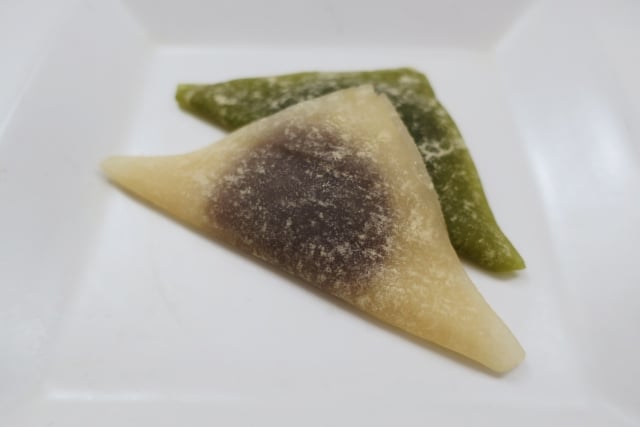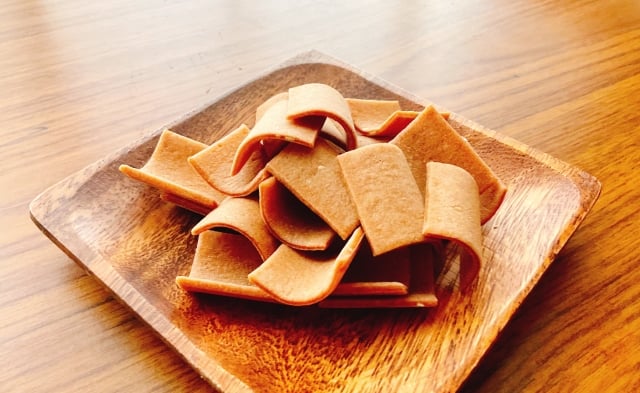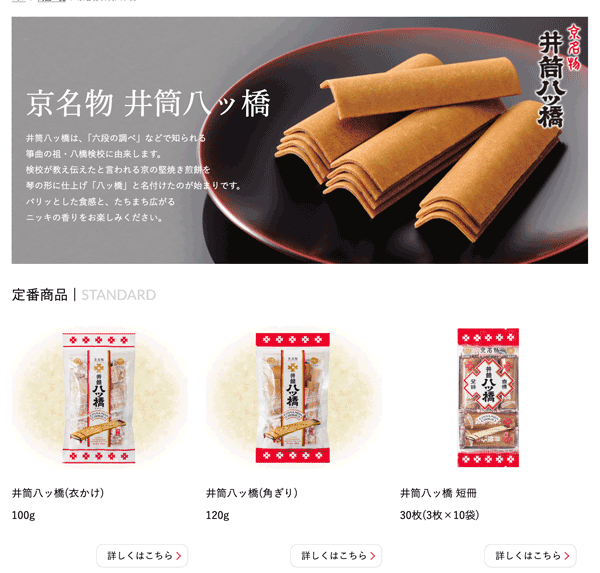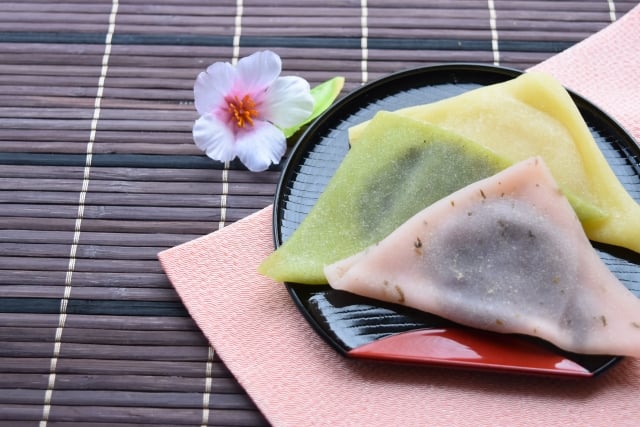Nama-yatsuhashi is undoubtedly one of the most legendary sweets from Kyoto.
Nama-yatsuhashi is made by steaming a mixture of rice flour, sugar, and a variety of flavors, rolling it out thin, and filling it with red bean paste, chocolate, or other ingredients.
It is so famous that it is no exaggeration to say that every Japanese person has eaten it at least once, and it is loved as a standard Kyoto souvenir.
However, if you go back in the history of Kyoto sweets, until the appearance of nama-yatsuhashi in the 1960s, the hard-baked, cinnamon-flavored OG yatsuhashi rice crackers were the biggest in the game.
In this article, I, a Kyoto resident, will introduce the difference between nama-yatsuhashi and the OG yatsuhashi and their tastes.
What exactly is nama-yatsuhashi?

Nama-yatsuhashi is a typical Japanese confectionery of Kyoto. The dough is made by steaming a combination of rice flour, sugar, and cinnamon, then rolling it out thin and filling it with azuki red bean paste.
Other flavors include green tea bean paste, sesame bean paste, fruit flavors, and chocolate and caramel sauces.
The flavor of the dough also changes to match the flavor of the filling. Seasonal flavors such as peach, chestnut, baked sweet potato, chocolate mint, and mango are also attractive, allowing customers to enjoy a variety of flavors of nama-yatsuhashi throughout the year.
Chocolate banana
- Yatsuzo in Nishio (My family's yatsuhashiya) (@yatsuzo) June 25, 2024
A popular classic! Fun raw yatsuhashi with chocolate and bananahttps://t.co/aze3Bk9CAs pic.twitter.com/eqY3UrXEeV
The soft dough of the nama-yatsuhashi has a unique texture and is sticky and chewy. The sweet red bean paste and other fillings gently melt in your mouth, creating a delicate symphony of sweetness.
The simple and rustic taste that never gets boring and the variety of flavors to choose from are the reasons for its long popularity.
Currently, more than 10 companies sell nama-yatsuhashi, and the prices are reasonable, ranging from 250 yen for a pack of 5 to 600 yen for a pack of 10.
The best-before date is one to two weeks depending on the product, so it is recommended to eat them as soon as possible.
If you want to buy some as souvenirs, it would be better to buy them on the last day of your trip.
What is the difference between yatsuhashi and nama-yatsuhashi?

As I mentioned earlier, until the appearance of nama-yatsuhashi in the 1960s, hard baked rice crackers called yatsuhashi, pictured above, were the standard Kyoto souvenir. Nama-yatsuhashi stirred things up by not baking the cracker dough. (For context: nama(生) means "raw")
The hard-baked rice cracker yatsuhashi has a history of more than 300 years.
The yatsuhashi is said to have been inspired by the Japanese koto harp, and although most are rounded to make them easier to carry and less likely to break, there are also straight, board-shaped ones.
In addition to the standard cinnamon flavor, there are also ginger, coffee, and green tea flavors.
People's tastes have changed over time, and nowadays when people mention "yatsuhashi" most will think of nama-yatsuhashi, but the OG crispy yatsuhashi has a much longer history.
Even today, hard-baked yatsuhashi are still sold, and are reasonably priced at about 700 yen for a package of 24 pieces.
The OG yatsuhashi has a longer shelf life than the nama-yatsuhashi, so it is better to choose the right one for the right purpose.

If you have the chance, go try these Kyoto classics yourself!
Yatsuhashi and nama-yatsuhashi, two of Kyoto's most popular sweets, are made from the same dough but have very different textures.
The oldest is yatsuhashi, a hard-baked rice cracker, but the sticky texture of nama-yatsuhashi is also addictive and delicious.
Both are easily available and reasonably priced, so be sure to taste them both when you visit Kyoto.

